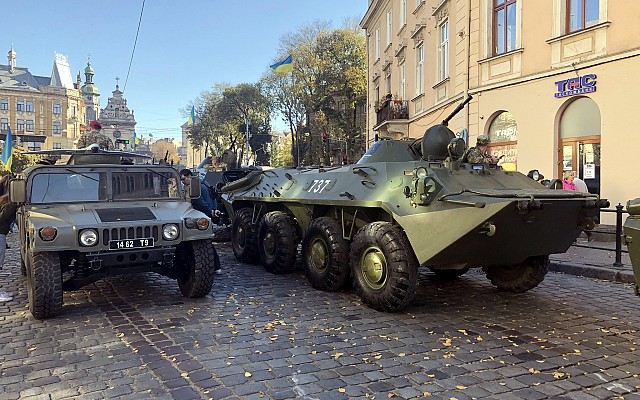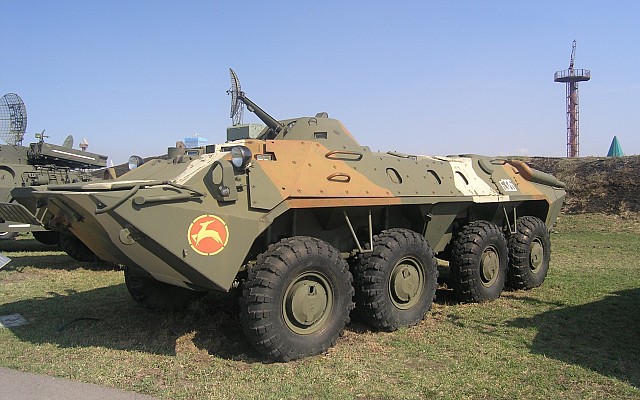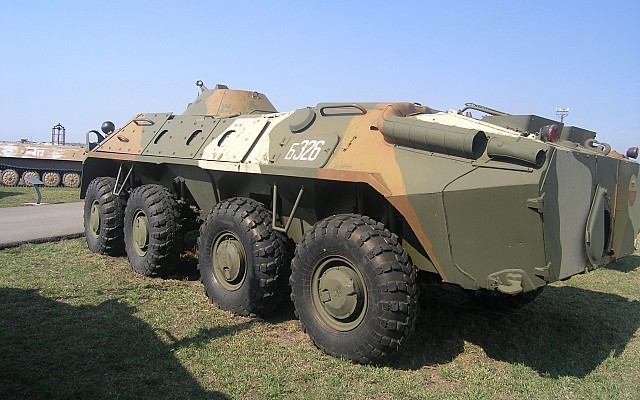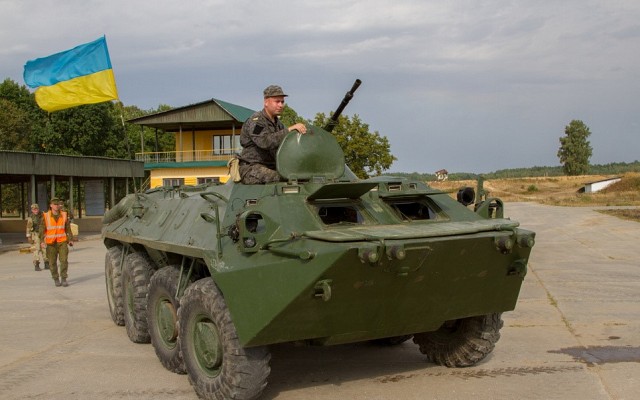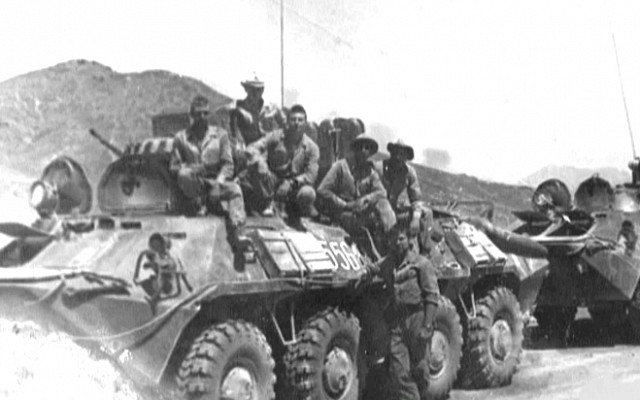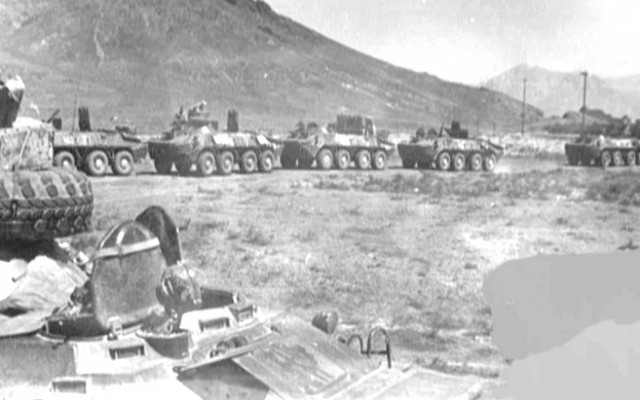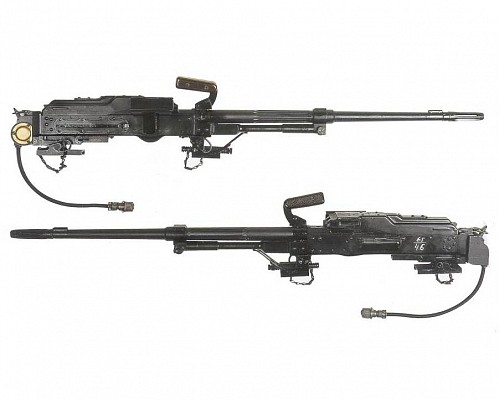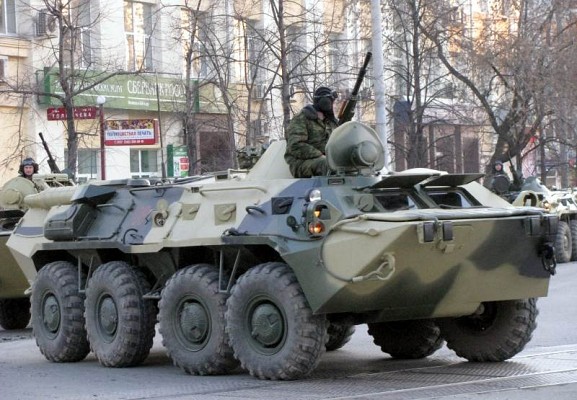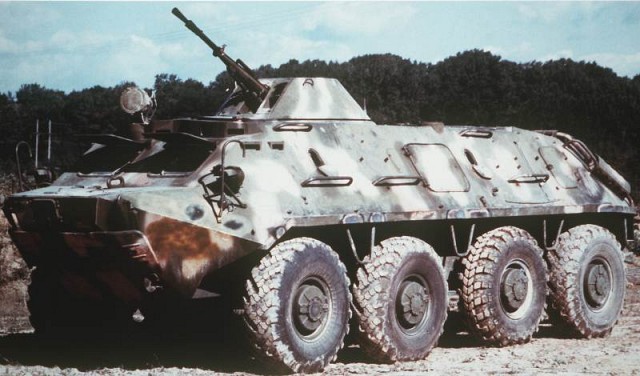BTR-70
NATO: M1978
Overview
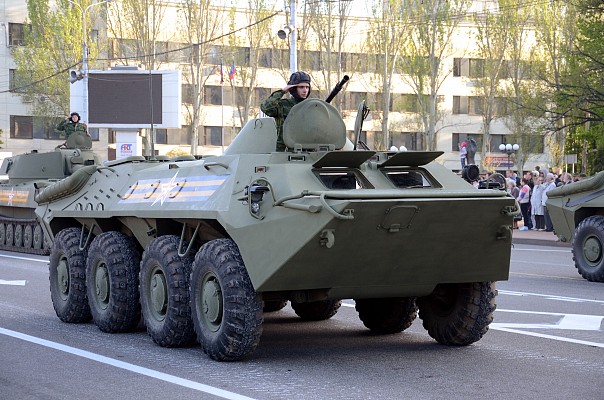
BTR-70
BTR-70 armored personnel carrier on parade in 2015.
Source: Andrew Butko -
© GNU Attribution Share Alike license
1980 (service use)
Soviet Union - Arzamas machine-builting plant (1981 - mid 1980's
Schützenpanzerwagen 70 / SPW-70 (East Germany)
GAZ-4905 (factory index)
Description
Introduction
The BTR-70 is a Cold War era armored personnel carrier of Soviet origin. The BTR-70 was developed in the mid 1970's to supplement the BTR-60 used by the Soviet motorized infantry. The BTR-70 was in turn replaced by the further improved BTR-80. The TAB-77 is a Romanian derivative of the BTR-70.
Layout
The design of the BTR-70 is largely based on the earlier BTR-60PB and can be considered an improved version. The driver and commander are seated side by side at the front of the vehicle. The one man turret is installed just behind them. The infantry compartment is in the middle of the vehicle and can be accessed by doors fitted between the 2nd and 3rd roadwheel and from large hatches in the roof. The two engines are installed at the rear.
Firepower
The BTR-70 is fitted with the same armament as the BTR-60. The 14.5mm KPVT heavy machine gun is the main armament and a 7.62mm PKT machine gun is mounted as a coaxial weapon. The KPVT can be used against light armored vehicles, soft skin vehicles and infantry behind sandbags or within buildings. It is also more capable of engaging infantry at long range than the PKT. At the time of development most Western armored personnel carriers could be engaged, although nowadays protection against 14.5mm rounds is rather common in mechanized units.
Protection
The sloped steel armor protects the crew and infantry from small arms fire and shell splinters. Over the frontal arc there is protection against 12.7mm rounds. Overall the BTR-70 has a higher level of protection than the older BTR-60PB. An NBC system is fitted as standard, but smoke grenade launchers are not.
Mobility
The BTR-70 has a good mobility on roads and speeds of up to 80 km/h can be achieved. The off road capability is rather good as well, but cross country mobility is limited under certain conditions. The BTR-70 is fully amphibious and is propelled in the water by means of a single water jet. Two 120 hp gasoline engines provide propulsion, but the twin engine setup is not ideal in regard to mechanical reliability.
Users
The main user of the BTR-70 was the USSR. Large quantities remain in use with ex-USSR nations. Many Eastern European nations also acquired the BTR-70 and some developed their own versions. Unlike the earlier BTR-60PB the BTR-70 was hardly exported to other parts of the world and thus the BTR-70 is very uncommon in Asia, the Middle East and Africa.
Variants
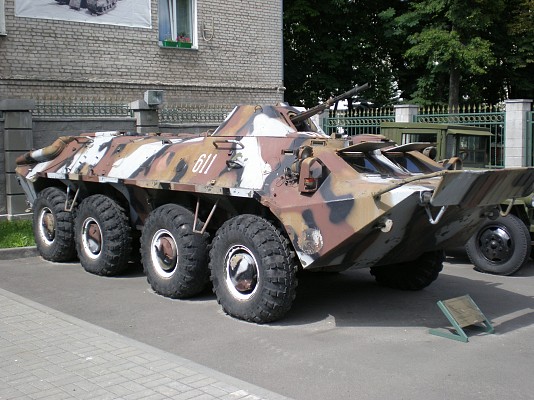
BTR-70
BTR-70 armored personnel carrier in a museum in Belarus.
Source: Guomundur D. Haraldsson -
© GNU Attribution Share Alike license
List of BTR-70 production models
Details
Media
Subcomponents
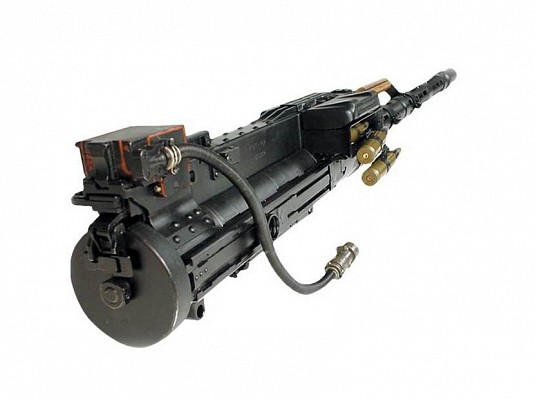
14.5mm KPVT
The 14.5mm KPVT heavy machine gun is the primary armament of the BTR-70.
